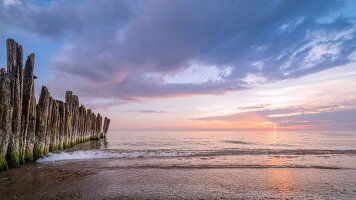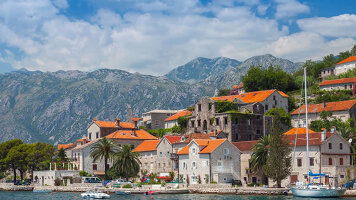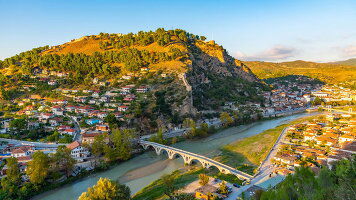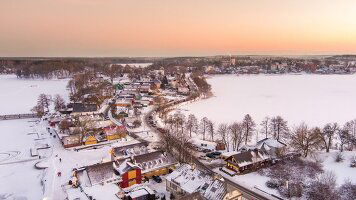Overview
Itinerary
Our adventure begins in Cluj-Napoca, one of the most beautiful and vibrant cities in Romania. During the dualist Austro-Hungarian period, Cluj experienced significant urban development with strong Western influences. This is visible in the city architecture, which is very different from Bucharest. Say bună ziua (hello) to your leader and fellow travellers around 6pm, where we gather as a group for the first time to get to know each other and learn more about the adventure ahead. Your leader will ensure a big welcome by arranging a group dinner for us all. Want to explore further? Additional pre-tour hotel nights are bookable through your sales representative. Stay: Hotel (D).
This morning, we leave Cluj and head to Maramures. On our way, we stop for lunch in Breb, a village laid out in a natural amphitheatre. It's surrounded by the Rooster's Ridge, the last (and most spectacular) remnant of a volcanic crater that erupted 9m years ago. In Breb, old traditions are highly respected and preserved, so a short stroll reveals beautiful wooden gates carved and decorated by local craftsmen and traditional old houses, one with links to King Charles III.
In the afternoon, we visit Desesti Church, the only old wooden church on the Unesco World Heritage list that is still open for the religious services of the local communities.
This evening, we stay at a guesthouse in the rural village of Botiza. Before we dine, we have a weaving demonstration from a local artisan. You may notice a few recurrent symbols, such as the rope of life, the sun, vegetal motifs and folk dances. All have a deeply symbolic for the villagers, representing daily chores, religion, ancestral beliefs and even death. Stay: Local guesthouse (B/D).
We continue discovering the Maramures region, starting at the Merry Cemetery. Here, more than 800 beautifully carved wooden crosses displaying bright, cheery paintings and annotated with limericks reveal the stories of almost everyone who has died in the town of Săpânţa. We continue with the Memorial of the Communism victims in Sighetu Marmatiei, the ancient capital of Maramures. We visit a museum in a former political prison, which provides a sobering testimony of the dark years in Romania.
This afternoon, we visit the incredible Barsana Monastery, one of the greatest masterpieces of Maramures crafts. Stay: Local guesthouse (B/L/D).
Before leaving Maramures, we have a last stop here to discover more of the local artisans. We then leave Maramures and head south to the medieval town on Sighisoara. Halfway, we stop in Transylvania – which has been nicknamed the new Tuscany – to delve into the local wine industry with a tasting. After, we continue our journey to Sighisoara. This medieval citadel, one of the best-preserved in Europe, will give you the feeling of travelling back in time, as you walk through the narrow, cobbled streets. This fortified town is characterised by the presence of towers that were formerly managed by the congregations of artisans; the Tailor's Tower is a real wonder of medieval architecture. Stay: Hotel (B/L).
Today we drive into the heart of Transylvania with its fortified churches. From the top of the towers, we have beautiful views of the countryside and colourful, traditional houses. We drive through the Unesco-listed Biertan, a Saxon village with a double-wall fortification. We enjoy lunch with a family.
In the evening, we arrive in Sibiu, a medieval city outstandingly well preserved and restored. It was elected the European Capital of Culture in 2007, due to its unique architectural style and atmosphere. Stay: Hotel (B/L).
We continue driving through the foot of the highest peaks in Romania, the Fagaras Mountains. On our way, we visit the impressive ruins of a centuries-old Franciscan monastery in Carta. We continue to the Valtori complex in the village of Lisa, a wool-processing workshop powered by hydraulic energy, a technique passed down for generations. At lunch, we will be delighted by a simple meal with a local family.
In the evening, we arrive in the secluded village of Viscri. Our last activity of the day is visiting the tiny fortified church here, a pearl of Transylvania, which was restored with the help of The Prince's Foundation, founded by King Charles III. In your free time, you can also visit the property of the King, a traditional old house transformed into a museum. Stay: Local guesthouse (B/L/D).
In the morning, we walk through the village, visiting a blacksmith along the way. Leaving Viscri, we go to Brasov. This city (Kronstadt in German) was founded in 1211 when Teutonic Knights were sent here by Andrew II of Hungary to fortify the border. The city has a rich Saxon, Hungarian and Romanian heritage, manifested in a lot of sights worth visiting: the White and the Black Towers, the Council House, St Nicholas Church, the first Romanian school, narrow streets and coloured houses, all very well preserved within the old city walls and towers.
This evening, we stay in the small village of Magura and enjoy dinner at the local guesthouse where we also spend the night. Stay: Local guesthouse (B/L/D).
Today, we visit Bran Castle, better known as Dracula's Castle. For many years, it was home to Queen Marie of Romania, Queen Victoria's granddaughter. We have a lunch of delicious traditional dishes in the yard of a fortified church and end the day with a great dinner and a campfire, if weather allows us.
In the afternoon, we have free time to stroll Magura village with its amazing views. Optional: Those interested can do bear watching with specialised guides in bear hides. Available upon request at a separate cost. We can guarantee the availability only at the moment of the request, better to book before arrival in Romania. Stay: Local guesthouse (B/D).
Today we head to the capital of Romania, Bucharest. On our way, we stop at Peles Castle, the former residence of the Romanian royals and an architectural highlight. We then continue our drive to discover the Romanian capital. Sometimes known as the Paris of the East with a mix of 18th- and 19th-century buildings, socialist blocks and modern buildings.
We will arrive in Bucharest in the middle of the afternoon, or a bit later according to the traffic into Bucharest. On the way to the hotel we will stop to see from outside the gigantic Palace of Parliament, the biggest administrative building in the world after the Pentagon. After checking in, we say goodbye to our local guide. For a deeper dip in the history of Bucharest booking post-tour accommodation is recommended. Stay: Hotel (B).
After breakfast, we begin our return journeys home. Alternatively, speak to your sales representative to add more nights to your trip and extend your time in Bucharest (B).
Trip Inclusions
- Experience local life in Romanian villages and visit craftsmen
- Discover the beautiful landscapes of the Carpathian Mountains
- Uncover medieval heritage; visit the Unesco sites of Sighisoara, Sibiu and Viscri
- 9 Classic nights (4 hotel, 5 guesthouse)
- Travel by air-conditioned bus/minibus
- All breakfasts, five picnic lunches and six dinners
- All transport and listed activities
- Tour leader throughout
- Itinerary and inclusions are subject to change
- Price is for land, cruise and internal flights as specified. Flights not specified are not included
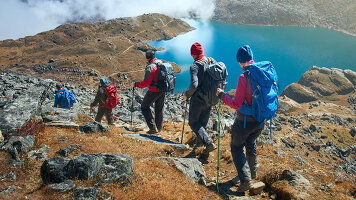
From classic small group tours & family adventures, to walking holidays, cycling trips and self-guided tours. Read more
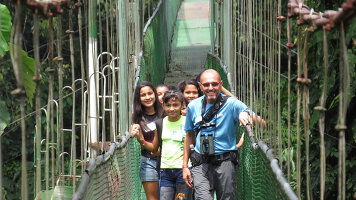
Exodus chooses their Leaders carefully. Professional, dedicated and are passionate about sharing their home countries. Read more
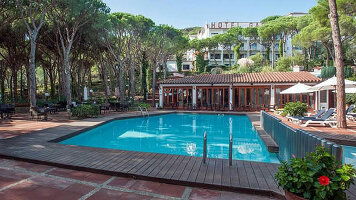
Wherever possible, Exodus chooses properties that are locally owned and that reflect the area you are visiting. Read more
Dates & Pricing
 USD
USD
A definite departure means minimum numbers have been reached for this departure to operate. Your Global Journeys Travel Advisor will check the availability of your departure date when you Inquire. Additional savings may apply. T&C’s apply.
Tour & cruises prices are per person. Prices shown have savings applied, are subject to availability and may be withdrawn at any time without notice. Pricing and trip details are correct at this point in time, however are subject to confirmation at the time of booking and are subject to change by Exodus. For cruise itineraries, cabin images are sourced from the cruise-line and should be treated as indicative only. Cabin inclusions, upholsteries and room layout may differ to the image(s) shown depending on the ship selected and your sailing dates.





